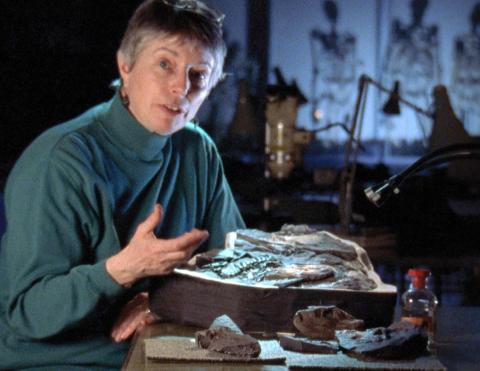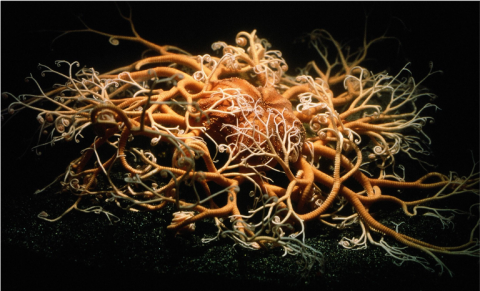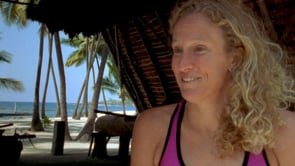
Echinoderms are exciting. They are wonderful. It takes some time and some patience to understand them.. You really have to watch, they really don't give away their secrets easily. -- Gail Grabowsky Kaaialii
As a world-class outrigger canoeist, Gail Grabowsky Kaaialii loves speed. But as a biologist at Chaminade University in Honolulu, she studies some of the world's slowest moving animals—
echinoderms. Kaaialii acknowledges that we humans have a body plan that has led us to great success on Earth. But she's unwilling to say that our body plan is necessarily better than that of any other creature.
Indeed, in her study of echinoderms, she's discovered that their bodies are ideally suited to the lives they lead on the ocean floor. “It just goes to show, you don't need eyes, you don't need ears, you don't need to be able to run fast to be a successful organism. You don't even need a brain,"
Kaaialii has concluded that, "When you investigate the lives of other organisms and you see that each is interesting and wonderful, you start to realize that the question of whether any body is better becomes moot, irrelevant.”
About Gail L. Grabowsky Kaaialii’s career
Gail L. Grabowsky Kaaialii, Ph.D., an Associate Professor and Director of the Environmental Studies program at Chaminade University in Honolulu, received her Ph.D., from Duke University in ecology and evolutionary biology. Kaaialii, has served as a member of the State Environmental Council and the Northwestern Hawaiian Islands Coral Reef Ecosystem Reserve Council and as the Associate Director of the Pacific Symposium for Science and Sustainability.
Grabowsky Kaaialii interests are in developmental and evolutionary biology, invertebrate zoology, ecology, biomechanics, and environmental science. She has won awards for her teaching, research, community service, swimming, and outrigger canoe racing. Grabowsky Kaaialii continues to inspire us all to take action to help the environment. On Earth Day April 2007 her book 50 Simple Things You Can Do to Save Hawai'i was published.



















